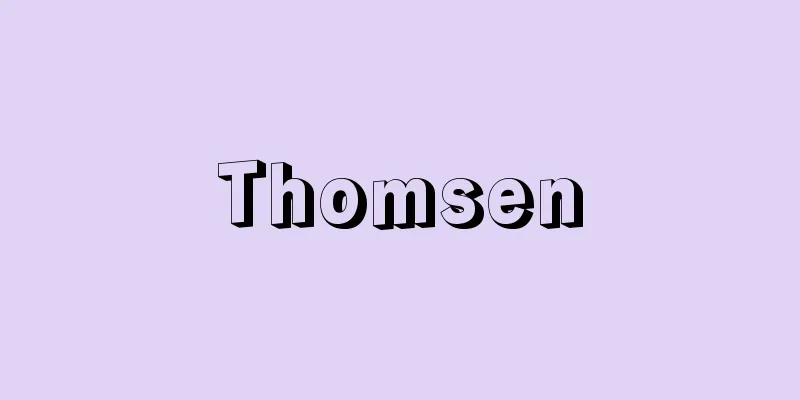Electric double layer

|
When a solid surface comes into contact with an aqueous electrolyte solution, selective adsorption of positive or negative ions occurs, and the solid surface becomes positively or negatively charged. In contrast, the solution side has more counterions of the opposite charge, and overall, the positive and negative charges are distributed at the interface. This is called the interfacial electric double layer. HLF Helmholtz (1879) explained various interfacial electrical phenomena using a molecular capacitor in which positive and negative ions are opposed in a 1:1 ratio as the simplest model. This idea was later revised to consider that some of the counterions in the solution form an antagonistic fixed layer with the ions adsorbed on the solid surface, but most of the counterions are distributed diffusively, gradually decreasing as they move away from the fixed layer due to Brownian motion (1910-1913). This is called the diffuse electric double layer, and this type of ion fixed layer is called the Stern layer, and the diffuse layer is called the Gouy-Chapman diffuse layer. When relative motion occurs between a solid surface and a solution, the potential difference that arises between the fixed ion layer and the mobile solution layer is called the interfacial potential (ζ potential), and interfacial electrokinetic phenomena are explained based on this potential difference. BV Derjaguin, L. Landau, EJW Verwey, and J.Th.G. Overbeek et al. have conducted detailed studies on the distribution of the electric double layer potential, the interactions between the double layers (repulsive and attractive forces), and the effects of electrolyte ionization. This is known as the DLVO theory. Source: Morikita Publishing "Chemical Dictionary (2nd Edition)" Information about the Chemical Dictionary 2nd Edition |
|
固体面が電解質水溶液に接触すると,正または負イオンの選択的吸着が起こり,固体面は正または負に荷電したことになり,これに対して,溶液側では反対電荷の対イオンが多くなって,全体として,正負の電荷が界面分布すると考えることができる.これを界面電気二重層という.H.L.F. Helmholtz(ヘルムホルツ)はもっとも簡単なモデルとして,正・負イオンが1:1に対立する分子状コンデンサーを考えて,種々の界面電気現象を説明した(1879年).その後,この考え方は修正されて,溶液中の対イオンの一部は,固体面に吸着するイオンと対立的固着層を形成するが,大部分の対イオンは,ブラウン運動のために固着層から離れるに従って漸減するように拡散的に分布するものと考えられるようになった(1910~1913年).これを拡散電気二重層といい,この種のイオン固着層をStern層,拡散層のことをGouy-Chapmanの拡散層とよぶ.固体面と溶液との間に相対運動が起こるとき,固定イオン層と可動溶液層との間に生じる電位差が界面動電位(ζ電位)で,界面動電現象はこの電位差にもとづいて説明される.B.V. Derjaguin,L. Landau,E.J.W. Verwey,J.Th.G. Overbeekらは,この電気二重層の電位の分布,二重層間の相互作用(斥力と引力)や電解質のイオン化の影響などについて詳細に考察した.これをDLVOの理論という. 出典 森北出版「化学辞典(第2版)」化学辞典 第2版について 情報 |
>>: Electrodialysis - Denki Touseki
Recommend
Aalborg - Ålborg (English spelling)
A city in northern Denmark. It is located on the ...
Owens - Michael Joseph Owens
American bottle-making engineer. The son of a coa...
Mount Elbert
A mountain in the Rocky Mountains in central Color...
Owazakko - Owazakko
...In Akita Prefecture it is called jajabokko, in...
paradise fish (English)
...The Thai betta ( Betta splendens ) (illustrati...
Žėmyna (English spelling) Zemyna
… In addition to the gods of the heavens, there a...
Demolition - Kaitai
〘noun〙① When something that was united becomes dis...
Non-payment of debt - Hisaibensai
In the broad sense, it refers to a case where an ...
Viola tricolor (English spelling)
…[Masao Yamashita]. … *Some of the terminology th...
Lucky charm - Engimono
While engi explains the history of a shrine or te...
First National City Corp. (English)
…Headquarters: New York. Founded in 1967 as a hol...
Freezing point depression
The phenomenon in which the freezing point of a s...
Datum plane
…For this reason, each paleontological species gi...
Sugikubo ruins
A Paleolithic cultural site located at the bottom ...
Corporate Group - Kigyo Group
In modern society, companies do not exist in isola...









